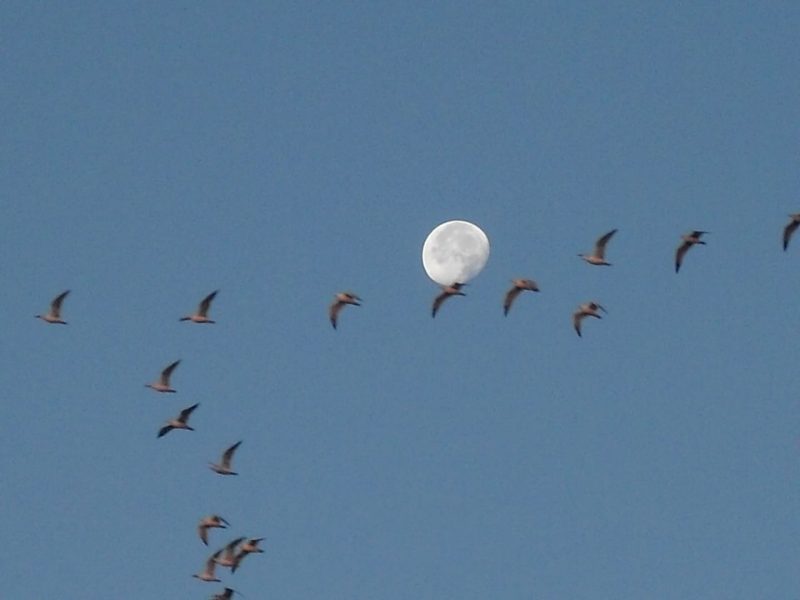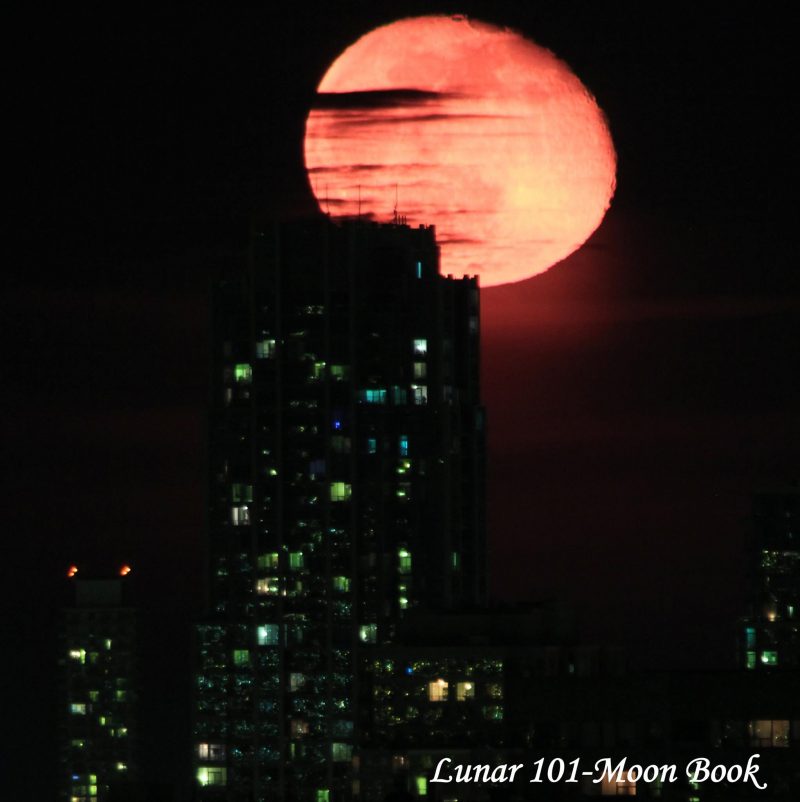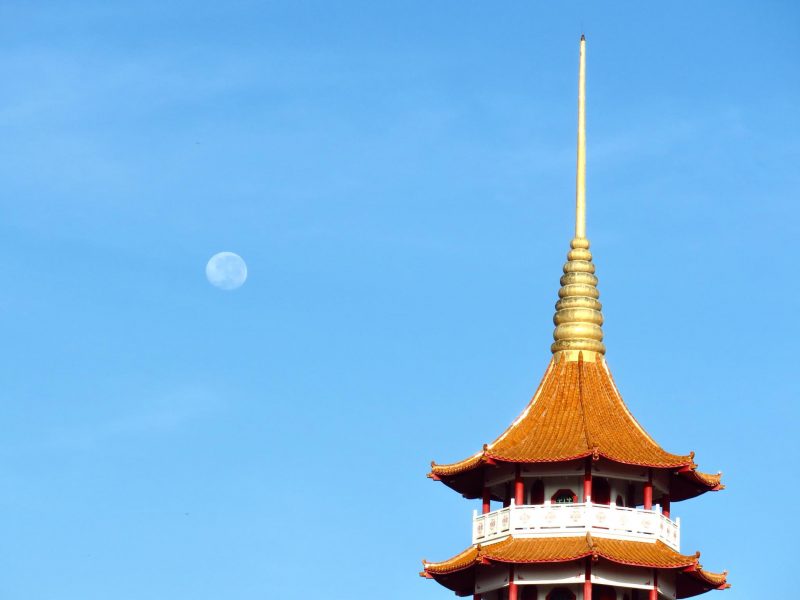

Ilija Desic in Belgrade, Serbia caught a waning gibbous moon with seagulls.
In the days after full moon, do you sometimes look for the moon and not find it? At that time, the moon is in a waning gibbous phase: less than full but more than half-lighted. A full moon rises at sunset, but a waning gibbous moon rises later at night and appears in the morning sky.
A waning gibbous moon can surprise you if you happen to be out late in the evening. It rises eerily some hours after sunset, glowing red like a full moon when it’s near the horizon.
Sometimes it looks like a misshapen clone of a full moon.
The 2019 lunar calendars are here! Order yours before they’re gone. Makes a great gift.

Wonderful photo of a waning gibbous moonrise over Toronto, via our friend Lunar 101-Moon Book.
A waning gibbous moon also initiates a rash of questions about seeing the moon during the day.
If it rises late at night, you know the waning gibbous moon must set after sunrise.
In fact, in the few days after full moon, you’ll often see the waning gibbous moon in the west in early morning, floating against the pale blue sky.

Jenney Disimon caught this daytime moon – a waning gibbous moon, 94.7% illuminated – from Sabah, North Borneo.
As the moon orbits Earth, it changes phase in an orderly way. Follow the link below to understand the phases of the moon.
New moon
Waxing crescent moon
First quarter moon
Waxing gibbous moon
Full moon
Waning gibbous moon
Last quarter moon
Waning crescent moon
Read more: 4 keys to understanding moon phases
Bottom line: A waning gibbous moon is between the full and last quarter phases. Watch for the waning gibbous moon from late night through early morning.
Check out EarthSky’s guide to the bright planets.
Help EarthSky keep going! Please donate.
from EarthSky http://bit.ly/2T9JOg7


Ilija Desic in Belgrade, Serbia caught a waning gibbous moon with seagulls.
In the days after full moon, do you sometimes look for the moon and not find it? At that time, the moon is in a waning gibbous phase: less than full but more than half-lighted. A full moon rises at sunset, but a waning gibbous moon rises later at night and appears in the morning sky.
A waning gibbous moon can surprise you if you happen to be out late in the evening. It rises eerily some hours after sunset, glowing red like a full moon when it’s near the horizon.
Sometimes it looks like a misshapen clone of a full moon.
The 2019 lunar calendars are here! Order yours before they’re gone. Makes a great gift.

Wonderful photo of a waning gibbous moonrise over Toronto, via our friend Lunar 101-Moon Book.
A waning gibbous moon also initiates a rash of questions about seeing the moon during the day.
If it rises late at night, you know the waning gibbous moon must set after sunrise.
In fact, in the few days after full moon, you’ll often see the waning gibbous moon in the west in early morning, floating against the pale blue sky.

Jenney Disimon caught this daytime moon – a waning gibbous moon, 94.7% illuminated – from Sabah, North Borneo.
As the moon orbits Earth, it changes phase in an orderly way. Follow the link below to understand the phases of the moon.
New moon
Waxing crescent moon
First quarter moon
Waxing gibbous moon
Full moon
Waning gibbous moon
Last quarter moon
Waning crescent moon
Read more: 4 keys to understanding moon phases
Bottom line: A waning gibbous moon is between the full and last quarter phases. Watch for the waning gibbous moon from late night through early morning.
Check out EarthSky’s guide to the bright planets.
Help EarthSky keep going! Please donate.
from EarthSky http://bit.ly/2T9JOg7

Aucun commentaire:
Enregistrer un commentaire